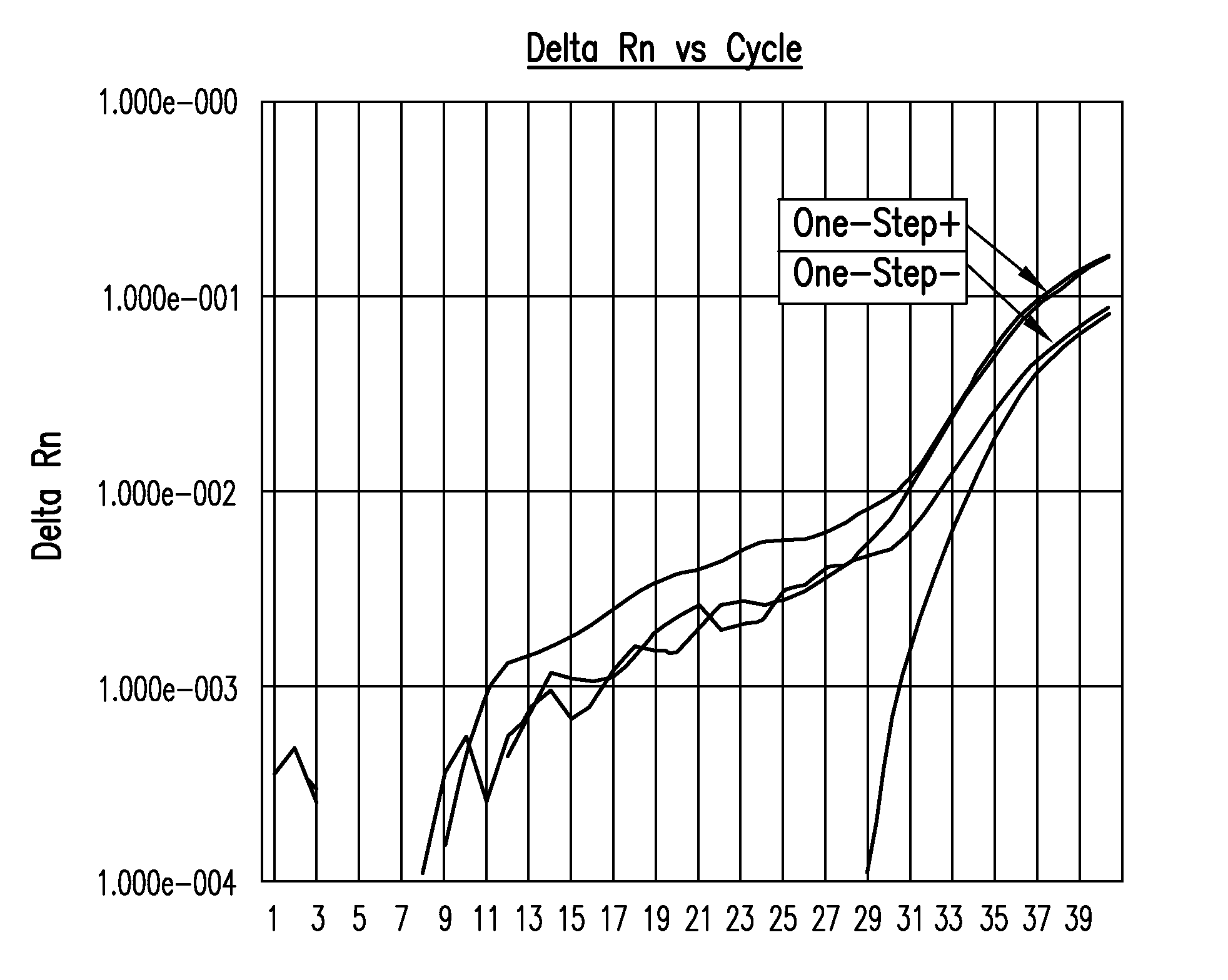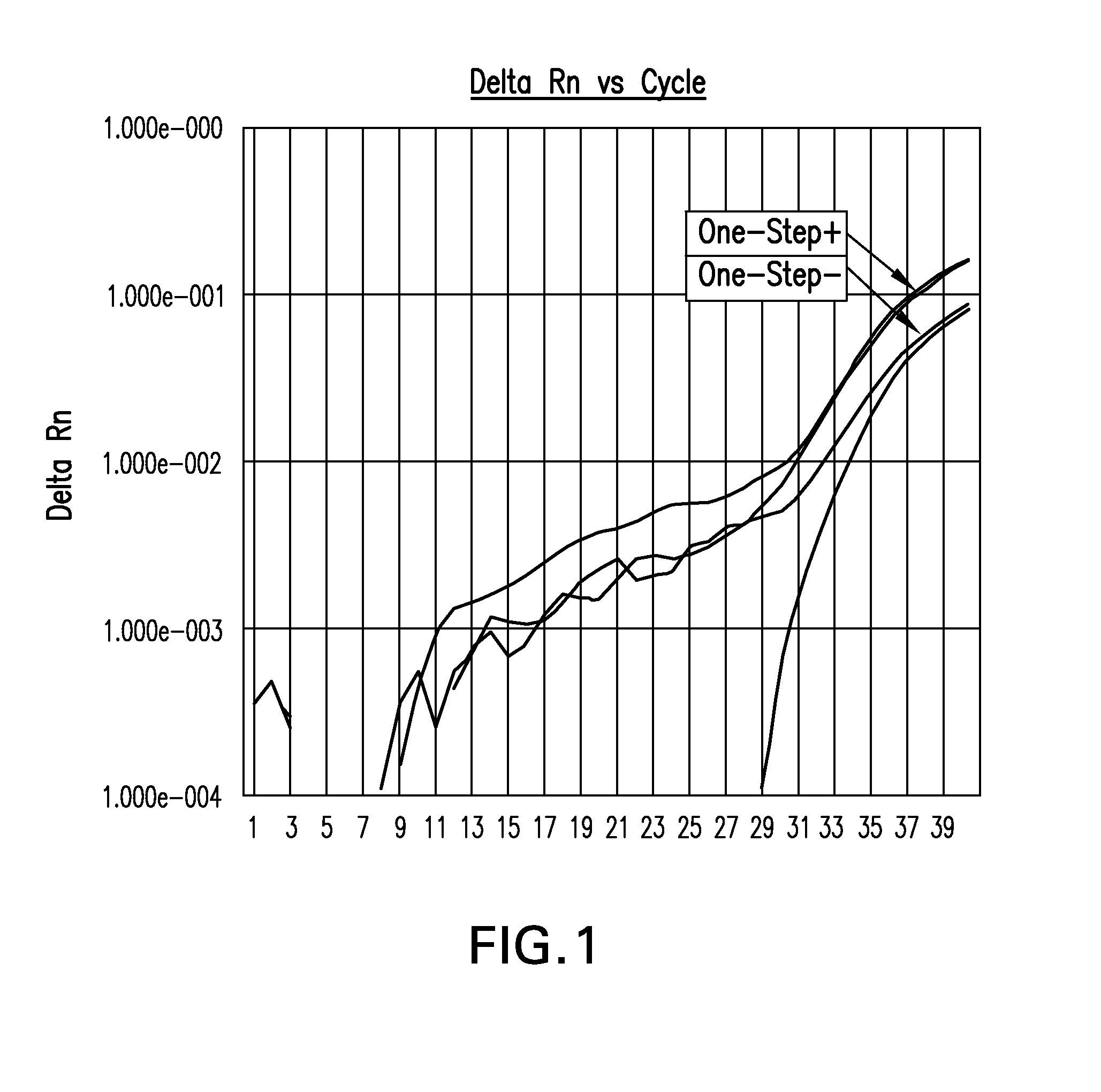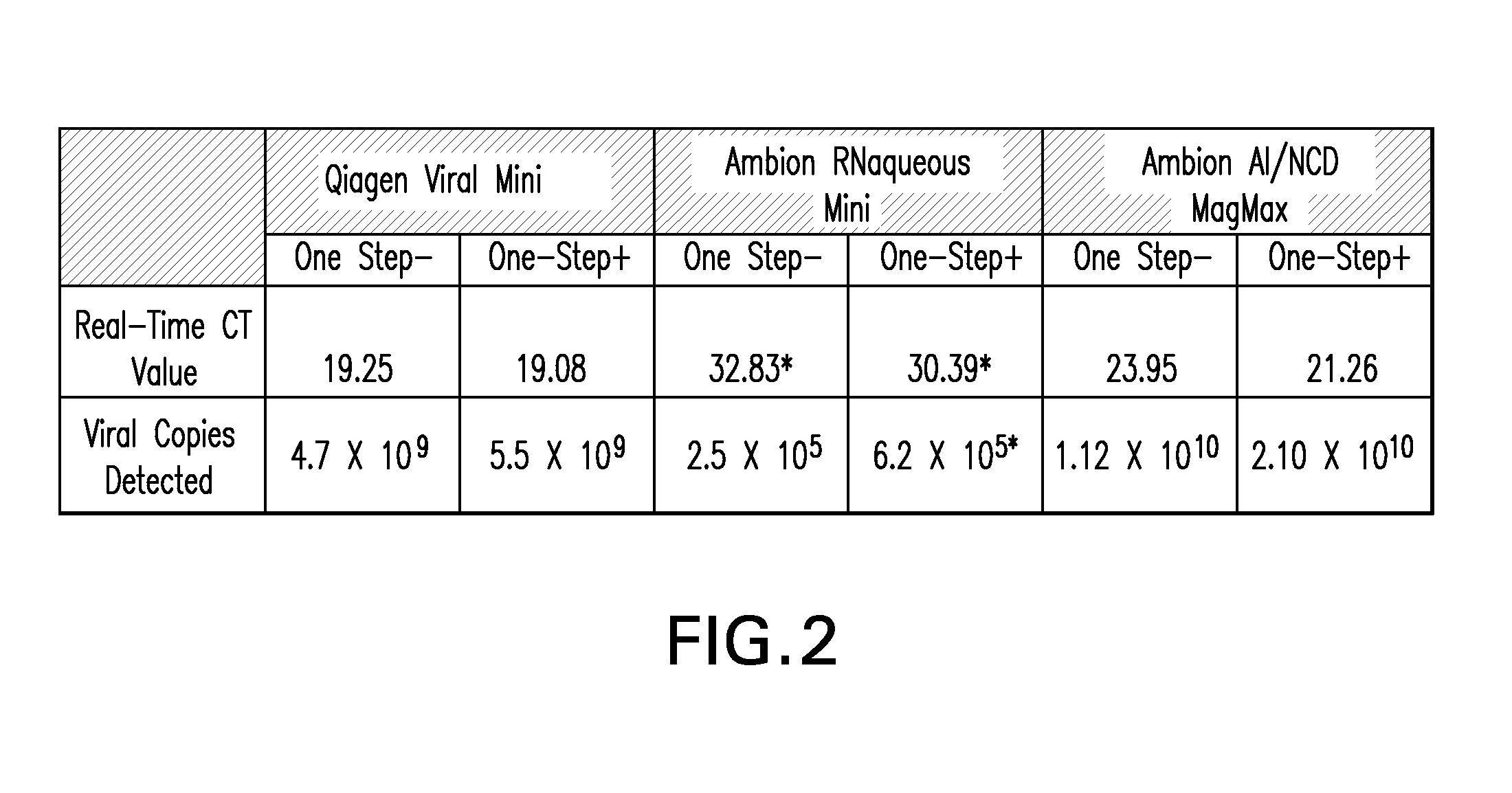Biological specimen collection and transport system and methods of use
a biological specimen and transport system technology, applied in the field of biological specimen collection, transport and storage of aqueous compositions, can solve the problem that existing technologies do not include a single-step composition, and achieve the effects of preventing the degradation of the nucleic acids present, maintaining and stabilizing and preserving the integrity of the nucleic acids
- Summary
- Abstract
- Description
- Claims
- Application Information
AI Technical Summary
Benefits of technology
Problems solved by technology
Method used
Image
Examples
example 1
Formulation of Exemplary Storage Solutions
[0121]The present example provides a general formulation of the PrimeStore™ (PanFlu) compositions of the present invention. Exemplary formulations are also detailed in Examples 2-5.
Materials
[0122]Guanidine thiocyanate, sodium citrate, Antifoam A® Concentrate, and N-lauroylsarcosine, sodium salt, were all purchased from Sigma Chemical Co. (St. Louis, Mo., USA). Tris(2-carboxyethyl) phosphine hydrochloride (TCEP) was obtained from Soltec Ventures Inc. (Beverly, Mass., USA). 2-amino-2-hydroxymethyl-propane-1,3-diol (TRIS) was obtained from Applied Biosystems / Ambion (Austin, Tex., USA). 2-[2-(Bis(carboxymethyl)amino)ethyl-(carboxymethyl)amino]acetic acid (EDTA) GIBCO® Ultra Pure was obtained from Invitrogen Corp. (Carlsbad, Calif., USA). All other reagents are available commercially from Sigma-Aldrich or USB Corporation.
TABLE 1FORMULATION RANGES OF EXEMPLARY COMPONENTSFOR THE PREPARATION OF PRIMESTORE ™ COMPOSITIONSComponent FinalReagentConcentr...
example 2
Formulation of an Exemplary Storage Solution
[0123]The present example describes a first exemplary formulation of the compositions of the invention. This formulation has also been alternatively referred to by the inventors as “PrimeStore™ Solution” or “PSS” version I.
TABLE 2PREPARATION OF PRIMESTORE ™ COMPOSITION (VER. 1)ReagentFinal ConcentrationGuanidine thiocyanate4MSodium citrate30mMSodium dodecyl sulfate0.25%(wt. / vol.)N-lauroyl sarcosine, sodium salt0.25%(wt. / vol.)2-mercaptoethanol (β-ME)0.1MAntifoam A0.1%(wt. / vol.)Citric acidq.s. to adjust pH to 6.5Nuclease-free water11.82mL
example 3
Preparation of a Second Exemplary Storage Solution
[0124]The present example describes the preparation of another exemplary storage solution according to the present invention. This formulation has also been alternatively referred to by the inventors as PrimeStore™ version 2.
TABLE 3PREPARATION OF PRIMESTORE ™ COMPOSITION (VER. 2)FinalReagentQuantityConcentrationGuanidine thiocyanate35.488gm3MTCEP0.02867gm1mMSodium citrate0.2931gm10mMN-lauroyl sarcosine,0.5gm 0.5%sodium salt (NLS)Antifoam A (10% solution)200μL0.002%TRIS (1 M)10mL100mMEDTA (0.5 M)20μL0.1mMHydrochloric acid (HCl)q.s. to adjust pH to 6.7—Nuclease-free waterq.s. to 100 mL—
PUM
 Login to View More
Login to View More Abstract
Description
Claims
Application Information
 Login to View More
Login to View More - R&D
- Intellectual Property
- Life Sciences
- Materials
- Tech Scout
- Unparalleled Data Quality
- Higher Quality Content
- 60% Fewer Hallucinations
Browse by: Latest US Patents, China's latest patents, Technical Efficacy Thesaurus, Application Domain, Technology Topic, Popular Technical Reports.
© 2025 PatSnap. All rights reserved.Legal|Privacy policy|Modern Slavery Act Transparency Statement|Sitemap|About US| Contact US: help@patsnap.com



